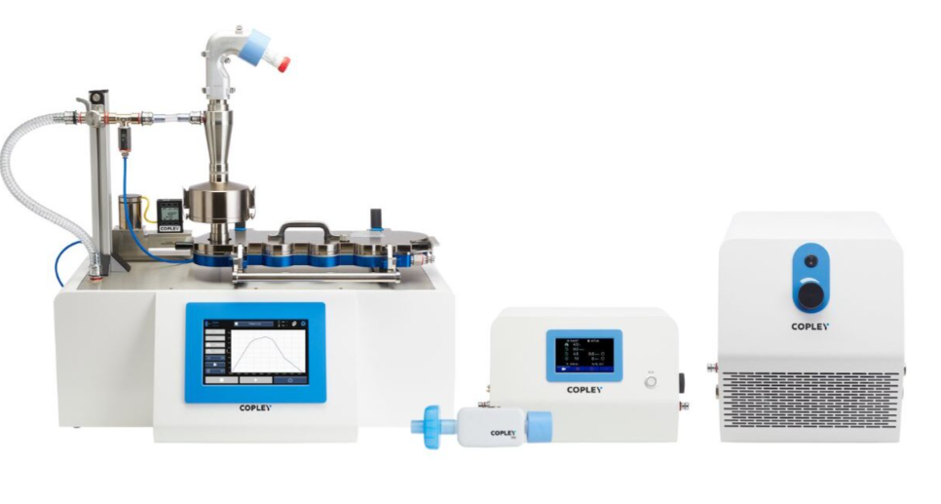Can you explain the term “realistic APSD” within the context of the standard compendial test setup for APSD measurement?
This is most easily done via a direct comparison of relevant test setups, as shown below. Figure 1A shows a test setup for classic compendial APSD measurements for DPIs; Figure 1B shows a test setup that enables realistic APSD measurements.

(A)

The new PSGs recommend using “mouth-throat models of different sizes (e.g. small and large)” to make realistic APSD measurements. In the image of the classic setup (1A), you see a standard, right-angled USP/Ph. Eur. induction port which is known to underpredict deposition in the mouth-throat, a potentially confounding limitation when it comes to demonstrating BE. You see a more clinically representative induction port in the setup for realistic APSD (1B); in this case, the port is the Alberta Idealized Throat.
In addition to using a more representative interface between the device and the impactor, the realistic APSD setup uses a breathing simulator in accordance with the regulatory guidance for realistic APSD measurement to apply “breathing profiles (e.g. weak and strong) that are representative of the entire patient population.” In contrast to the compendial methods for orally inhaled products, which specify constant flow rates for APSD measurement in which the applied profile is a sharp-edged square wave, a breathing simulator allows the application of far more clinically representative test conditions via the adjustment of variables such as rate of acceleration to peak flow.


